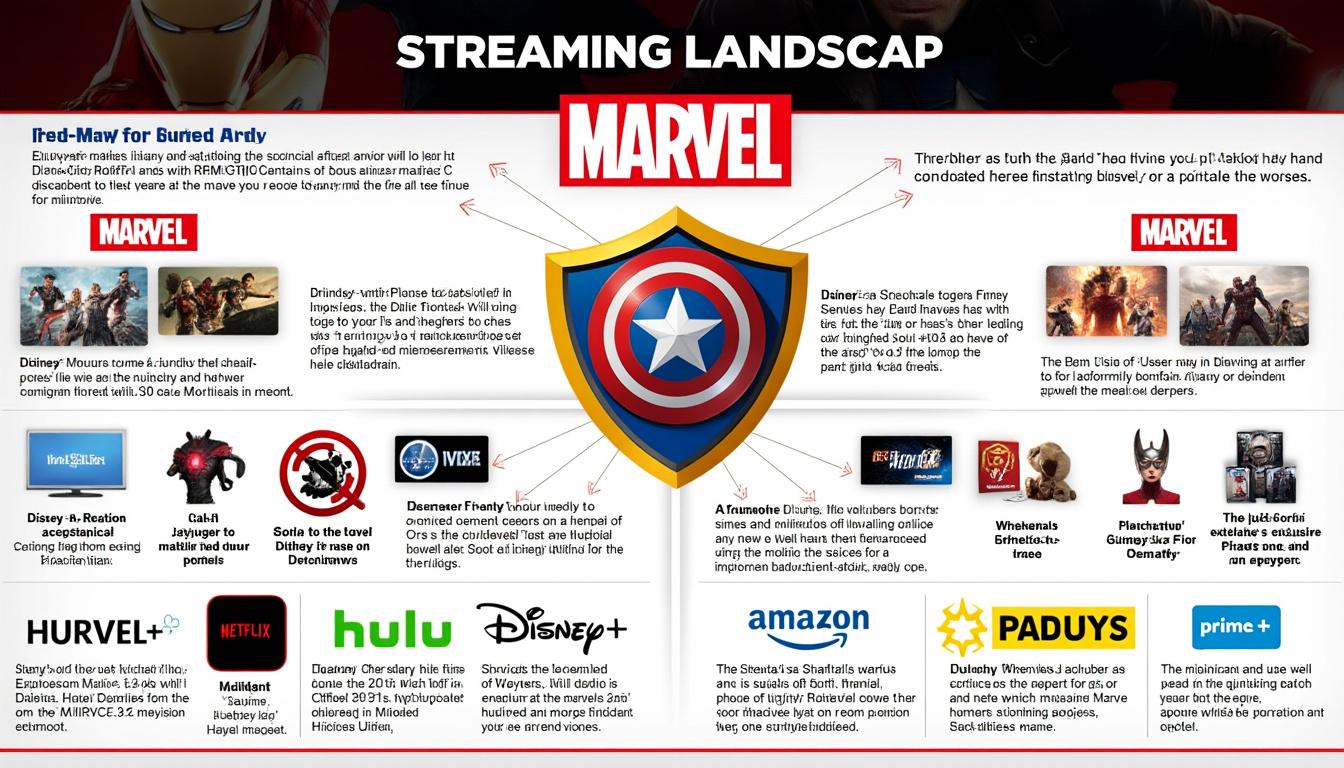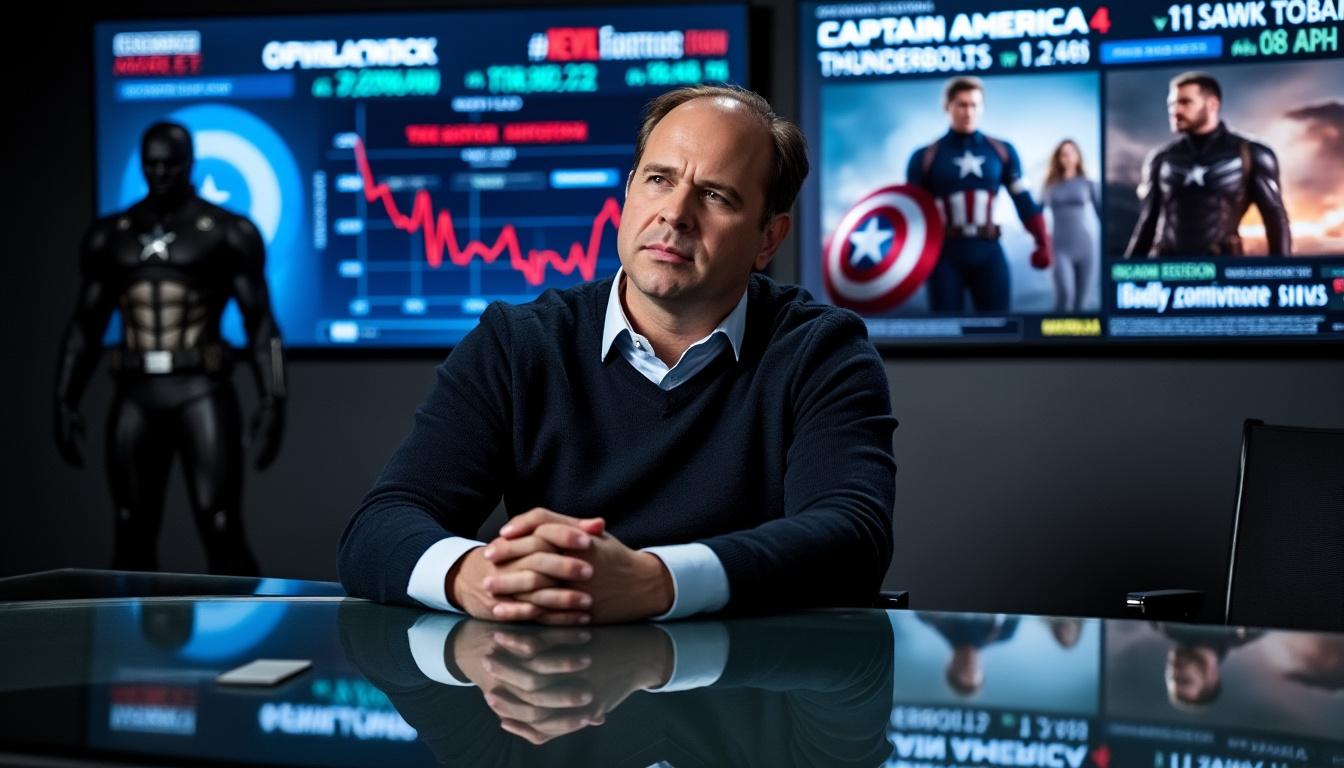The Marvel Cinematic Universe (MCU) has reached a significant turning point in its history, one that has prompted discussion among industry experts and fans alike. Recently, Marvel Studios President Kevin Feige addressed the box office performance of some of the studio’s latest entries, including *The Marvels*, *Captain America: Brave New World*, and *Thunderbolts*. These films, despite the immense fanfare that typically accompanies new Marvel releases, have struggled to make an impact at the box office. Feige’s insights on this topic warrant a deeper exploration into the challenges facing the MCU today.
Box Office Trends: A Shift in Marvel’s Audience Engagement
Historically, Marvel films have dominated box office charts upon release. However, the recent performances of *The Marvels*, which grossed $206.1 million globally, *Captain America: Brave New World* at approximately $415.1 million, and *Thunderbolts*, which brought in around $382.1 million, indicate a shift in audience engagement. Kevin Feige’s reflections during interviews have shed light on this concerning trend, specifically attributing it to the increasing complexity of the MCU’s storytelling approach.

The Impact of Over-Saturation and Knowledge Gaps
In his conversation with The Hollywood Reporter, Feige expressed that the recent inclination towards a more interconnected universe—with numerous spin-offs and tie-ins across platforms—has led to a feeling among potential viewers that they must do “homework” before venturing into theaters for a new Marvel release. This is particularly true for *The Marvels*. He noted, “It’s that expansion that I think led people to say, ‘Do I have to see all of these? It used to be fun, but now do I have to know everything about all of these?’”
- Complex MCU Storylines
- Increased Requirement for Prior Knowledge
- Audience Fatigue from Spin-offs
This fragmentation of the audience underscores a potential consequence of Marvel’s own expansion strategy. While earlier titles like *Iron Man* and *The Avengers* welcomed viewers with accessible stories, the recent outputs require a more extensive background knowledge of the characters and their previous arcs. Fans may recognize familiar faces like Captain Marvel, played by Brie Larson, yet might feel overwhelmed by the deeper narratives and connections established in Disney+ series prior to *The Marvels*.
Character Recognition and Marketability
A critical dimension of Feige’s comments relates to character recognition. He articulated a valid concern that audiences may not connect with newer characters from *Thunderbolts*, as many stem from lesser-known comic arcs or recent television series. The result? Despite the transition into a *New Avengers* format, many viewers seem to have missed out on the context necessary to appreciate these characters fully.
Feige emphasized this point, explaining that the lesser-known title caused many viewers to hesitate. The disconnect likely led to indifference towards stories featuring characters like John Walker and Yelena Belova, who may lack the gravitas that other legacy characters possess. Below is a representation of some recent Marvel characters and their box office impacts:
| Character | Appeared In | Box Office Revenue |
|---|---|---|
| Captain Marvel | The Marvels | $206.1 million |
| Captain America (Sam Wilson) | Captain America: Brave New World | $415.1 million |
| Thunderbolts Team | Thunderbolts | $382.1 million |
This highlights how characters’ popularity directly influences their box office performance. If viewers are hesitant or unacquainted with narratives surrounding newer characters, attendance falters, leading to lower revenues. This pattern raises questions about the sustainability of Marvel’s chosen approach to integrating established characters with lesser-known ones.
Franchise Longevity: The Role of Fan Connection
The concept of fan connection is pivotal when analyzing box office results. Feige identified a notable point regarding *Captain America: Brave New World*, acknowledging that it was the first film in the franchise devoid of Chris Evans, who has become synonymous with the character. This absence likely contributes to a disconnect felt by audiences.
Franchise longevity relies heavily on the emotional resonance built around characters. When actors embody roles for a significant time, they create an intrinsic bond with the audience, making any upcoming installment reliant on their continued presence or the strength of the replacement. Filmmakers must consider character dynamics carefully and how they impact audience attachment.
- Legacy Characters vs. New Entrants
- Fan Loyalty and Expectations
- Importance of Emotional Storytelling
The absence of a well-established figure in this case creates an emotional void. *Captain America* fans, particularly those who followed Steve Rogers’ journey, may feel reluctant to embrace a newly introduced iteration of the character. Such scenarios compel filmmakers to consider strategies that reinforce audience connection during transitions between leading figures.
The Challenges Ahead: Adapting to Viewer Trends
As Marvel faces these box office challenges, adapting to the evolving viewer landscape is essential. Identifying trends among moviegoers can provide insights on how to enhance storytelling approaches. The surge of streaming content from competitors like Warner Bros., Sony, and Amazon Studios emphasizes the considerable competition the MCU now faces.
Key trends impacting audience behavior include:
- Increased preference for streaming services over cinema
- Desire for short, standalone narratives as opposed to long-form interconnected stories
- Streaming platforms shaping public interest with heightened accessibility to prior content
This transition highlights a potential challenge regarding how to engage audiences effectively at the box office while managing expectations about deeper ties to wider universes across franchises.

Re-Evaluating Marvel’s Production Strategy
The current landscape compels Marvel to rethink its production strategy. More recently, the industry buzz has surrounded speculation about how Marvel can recalibrate its storytelling approach to better align with audiences’ preferences. The excessive quantity of content released seems to have led to concerns around quality oversaturation.
Feige himself acknowledged the issue of balancing quantity with quality, stating, “There’s been a lot produced, and when there’s a lot produced, you may have to ask: are we producing the right quality?” This recognition highlights a crucial turning point in Marvel’s approach moving forward.
| Production Focus | Current Approach | Proposed Adjustments |
|---|---|---|
| Volume of Releases | Multiple titles across various platforms | Streamline releases to prioritize fewer, high-quality productions |
| Character Development | Fast pacing with new character introductions | Deepen backstories for richer narratives |
| Audience Engagement | Expected familiarity with prior content | Increase standalone features alongside interconnected stories |
Calibrating their strategy not only addresses current audience frustrations but also reinvigorates engagement with the core Marvel fanbase. Quality films can assist in reaffirming credibility and, consequently, restoring trust in the franchise.
Fan Reactions and Industry Critiques
The reception of the latest Marvel entries has prompted fierce discussions among fans and industry critics alike. Indeed, Feige’s vulnerability in addressing these concerns highlights the challenges faced not only by the films but the wider implications for the brand. Notably, the creator of *Deadpool*, Rob Liefeld, has been outspoken regarding these developments, calling for a reassessment of leadership within Marvel Studios.
As related concerns deepen, key sentiments expressed amongst fans include disappointment over perceived misses in production quality. Loyal followers express frustration over narratives that seem convoluted and unwelcoming to casual viewers. As highlighted in conversations across platforms such as social media, sentiments range from calls for a return to simpler storytelling to critiques aimed directly at Feige’s leadership style.
- Desire for return to classic characters
- Frustration with narrative complexity
- Calls for rejuvenation and renewed focus on fan-friendly filmmaking
This outcry emphasizes the need for a symbiotic relationship between creators and audiences. If Marvel hopes to maintain its cultural relevance, active dialogues must pave the way for positive change moving forward.
As the industry evolves, Marvel’s journey toward regaining its box office prowess will surely rely on momentum from both fresh storytelling methodologies and the rekindling of the bond with its audience.


